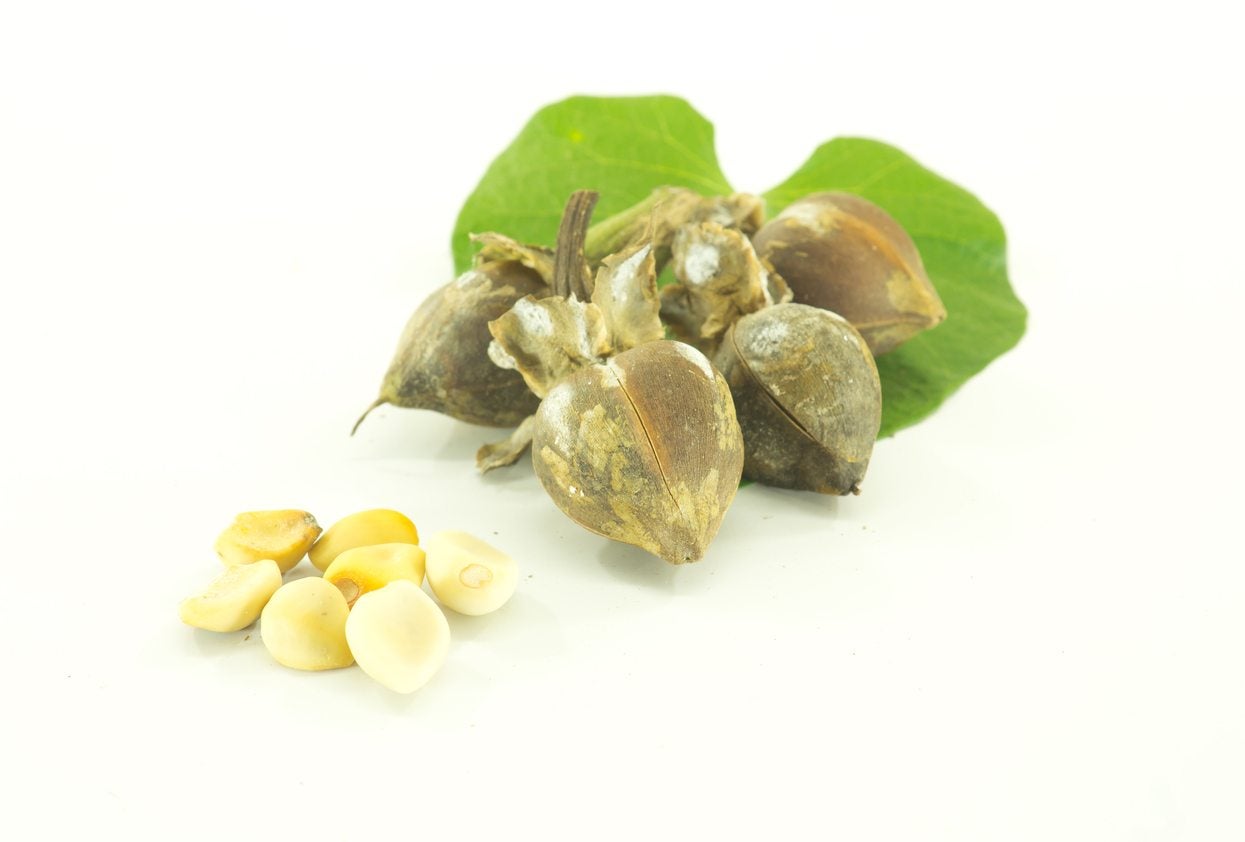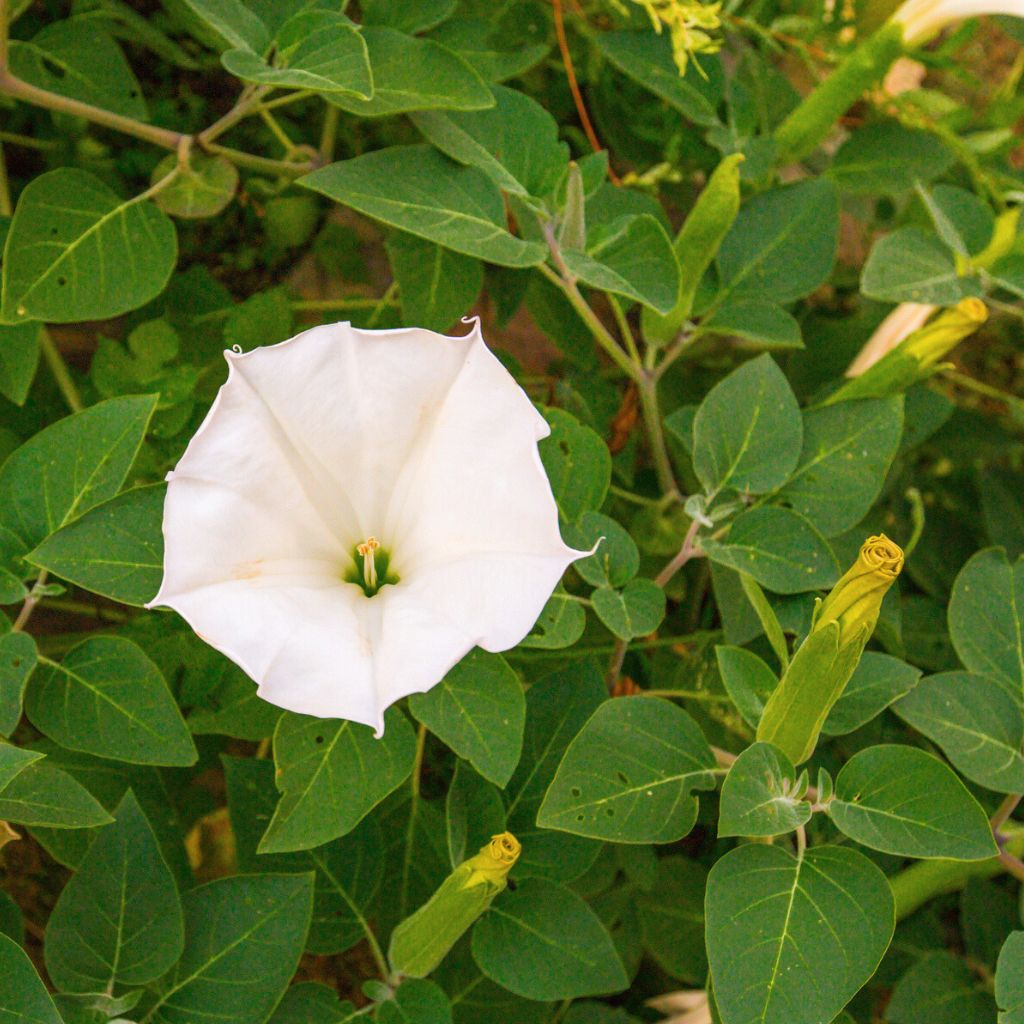Cutting Back Moonflowers – How To Prune A Moonflower Plant


One might say that moonflower is morning glory’s counterpart. Ever the cheerful early bird of the garden, morning glory (Ipomoea purpureum) opens its stunning, trumpet flowers with the first rays of the morning sun. Moonflower (Ipomoea alba), on the other hand, opens its lovely, trumpet-shaped blooms at dusk, and are oftentimes the stars of evening moon gardens. Anyone who has grown moonflower, or their day-blooming cousin, has probably quickly learned that these vines need regular pruning to keep them in check and looking their best. Continue reading to learn how to prune a moonflower plant.
Cutting Back Moonflowers
Moonflowers are beloved for their light, sweet-scented, trumpet-shaped, white to purple flowers, which bloom from dusk to dawn. Perennials only in warm climates of U.S. hardiness zones 10-12, moonflower vines are grown as annuals in cooler climates, where they have no trouble covering whatever structure you place them on. With its rapid and rampant growth, gardeners who prefer a tidy, tame garden may find themselves trimming moonflower plants three times a year to control their shape and growth. Because it blooms on new wood, moonflower pruning can be done several times of the year. Generally, however, moonflowers are cut back to the ground in autumn. The root zone of perennial moonflowers is then mulched for winter protection. From autumn to early spring, annual moonflowers can be cut back or pulled out to make room for the next season’s plants. However, moonflowers have decorative seed pods which add interest to the garden in late summer through fall. Many gardeners choose to delay cutting back moonflowers to allow these decorative seeds to form. Seeds can then be harvested and stored to produce new moonflowers the following season.
How to Prune a Moonflower Plant
Whenever pruning anything in the garden, only clean, sharp tools should be used to reduce the risk of disease. When pruning the moonflower to shape, remove any crossing or crowding branches to open up the center to good air circulation and sunlight. Also, cut back or retrain wild vines growing away from the trellis or support, or vines that have begun to trail along the ground or on other plants. When left unchecked, Ipomoea plants can choke out their companions. If you enjoy trimming and training plants, moonflower is an excellent candidate to grow and train into a tree form or artistic espalier. It is important to note that as a member of the nightshade group of plants, handling moonflower has caused skin irritations in some people. Always wear gardening gloves and wash your hands frequently when handling moonflower plants.
Gardening tips, videos, info and more delivered right to your inbox!
Sign up for the Gardening Know How newsletter today and receive a free copy of our e-book "How to Grow Delicious Tomatoes".
-
 Create A Romantic Garden Straight Out Of Bridgerton: Regency Era Romance In Your Garden
Create A Romantic Garden Straight Out Of Bridgerton: Regency Era Romance In Your GardenTry some romantic garden ideas straight out of Bridgerton. Flowers and gardens in the Regency era were lush and charming and you can get the same look!
By Bonnie L. Grant
-
 Moody Blooms For Spring: 8 Types Of Black Flowers To Add Drama To Spring Displays
Moody Blooms For Spring: 8 Types Of Black Flowers To Add Drama To Spring DisplaysFrom midnight burgundies to inky violets, several types of black flowers can enrich and embolden a spring display. Try these brooding bloomers for a moody garden
By Tonya Barnett
-
 Moonflower Seed Harvesting: Collecting Moonflower Seed Pods For Growing
Moonflower Seed Harvesting: Collecting Moonflower Seed Pods For GrowingPropagating moonflower vine seeds is the only way to replicate the vines, as vegetative reproduction is not viable. Learn when and how to harvest and plant moonflower seeds in the article that follows to continually grow this plant in your garden.
By Bonnie L. Grant
-
 Moonflower Plants: Tips For Growing Moonflowers In The Garden
Moonflower Plants: Tips For Growing Moonflowers In The GardenIf your garden area is used for evening relaxation and entertainment, add the enticing fragrance of moonflowers in the garden. Learn how to grow moonflowers in this article. Click here for more info.
By Becca Badgett